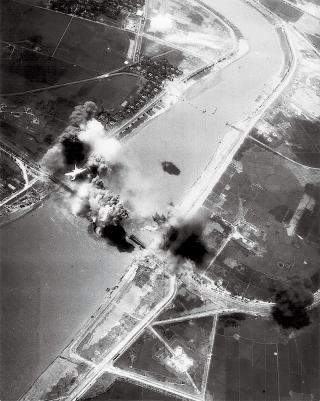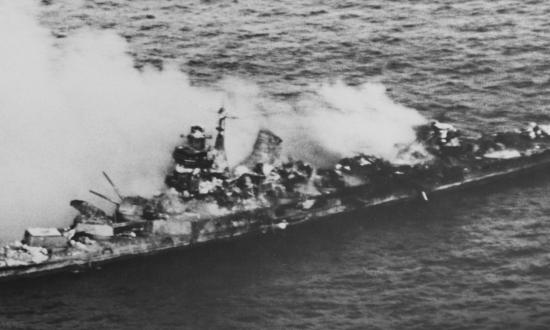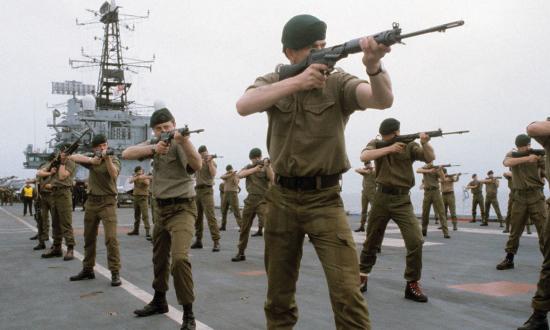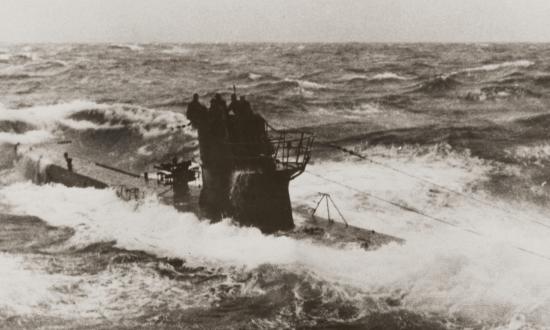Fifty years ago this summer, a large-scale deployment of U.S. Navy and Air Force assets took the fight to North Vietnam. Operation Linebacker punched north of the 20th parallel, and when it did so, it went loaded for bear. By the end of 1972, North Vietnam was ready to talk peace. The U.S. Seventh Fleet was key to this outcome, one that the world at large was desirous of seeing in those tempestuous times, and here we are honored to give the sailors of ’72 their semicentennial due. Acclaimed historian of the period Edward J. Marolda returns to our pages to illustrate in detail the crucial role of sea power in bringing about the end of the Vietnamese conflict.
Another chapter in the saga of the Navy in the Vietnam War has its 55th anniversary this July—the disastrous fire on board the supercarrier USS Forrestal (CVA-59) while engaged in combat operations in the Tonkin Gulf. J. M. Caiella delivers a consummate blow-by-blow account of the freak conflagration that ripped through the Forrestal—and the important lessons learned therefrom.
Also this issue, we are pleased to present a promising debut from Nathaniel Patch, archivist at the National Archives and Records Administration. He regales us with a bizarre account from the annals of the Pacific war: On 9 July 1943, the submarine USS Permit (SS-178) sank a Soviet oceanographic vessel, mistaking her for a Japanese ship. Mr. Patch looks at both the gripping events that unfolded at sea and the diplomatic flurry that erupted between Washington and Moscow amid the height of the war.
Diplomatic flurries certainly were not unique to the Pacific theater in World War II. With the fall of France in 1940, suddenly, the French Navy ships that lay at anchor on the Algerian coast had become an existential threat to the British, who were determined not to let that fleet fall into German hands. Courtesy of English maritime author Ian Sebire, here is the story of how the Royal Navy attacked, battled, and destroyed the warships of its recent ally in July 1940. Relations between France and Britain were, shall we say, afterward somewhat strained.
World War II, of course, ended with a mushroom cloud—harbinger of a new era dawning. In the postwar arms race, the Navy had a prominent nuclear-testing role beginning in 1946. By 1958, it was undertaking the largest-ever series of such tests at the time: Operation Hardtack, which oversaw an unprecedented 35 nuclear detonations. As a lieutenant (junior grade), Retired Rear Admiral Daniel W. McKinnon Jr. was an eyewitness to history as the mushroom clouds billowed over Micronesia, and here he serves up an engaging (and witty) firsthand account. Talk about an experience one is unlikely to forget!
Lastly, we welcome back author William J. Prom for another foray into the days of the Old Navy. The fleet’s war against the slave trade had been a daunting and largely thankless effort throughout the 19th century. But once the right vessel type for the mission appeared—the screw steamer—the Navy’s slave-ship seizures actually began to enjoy an uptick in the 1850s. In Mr. Prom’s latest offering, we meet a trio of screw-steamer commanders who doggedly ran up a remarkable string of slave-ship seizures in Caribbean waters. These naval officers of yesteryear did heroic work; join us in saluting their long-forgotten deeds.
Eric Mills
Editor-in-Chief








